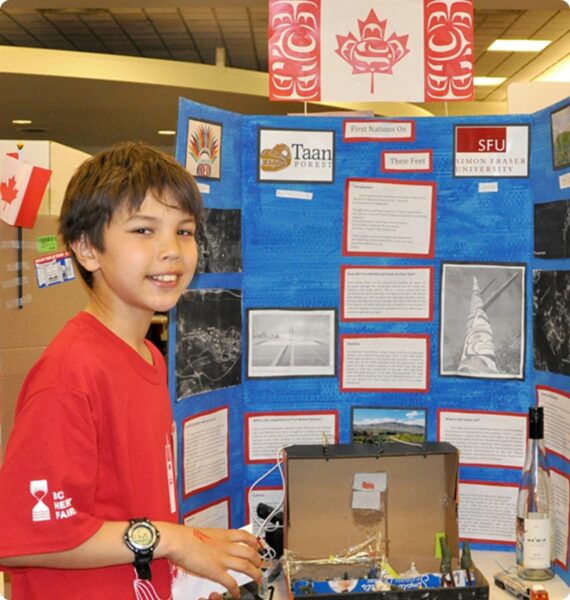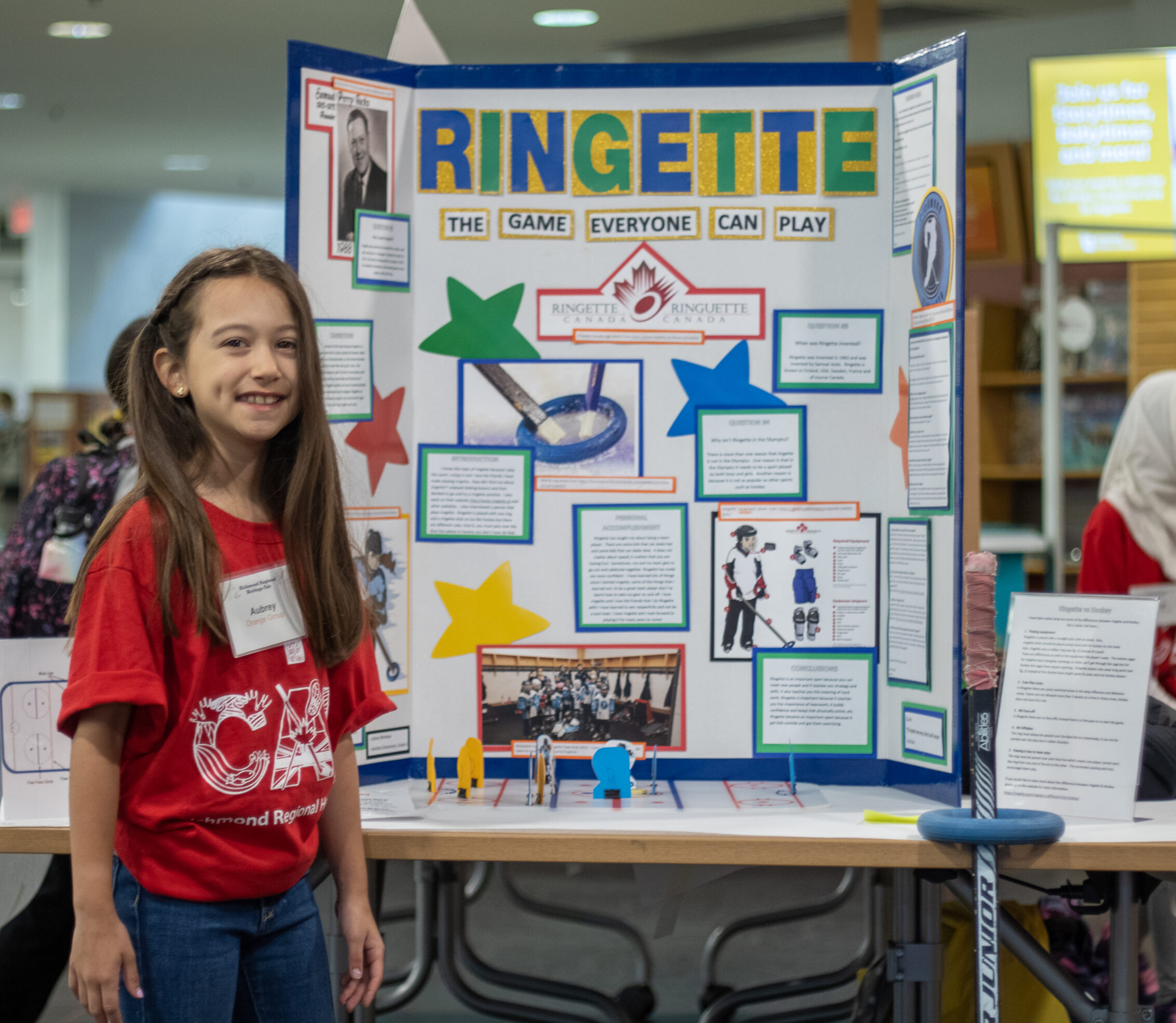How to Participate
Heritage Fair students follow their curiosity, use historical inquiry skills, and present their learning to an authentic audience.
To take part in Heritage Fair, students:
- Choose a topic in Canadian history to explore, often drawn from their cultural heritage or personal interest
- Develop an inquiry question that stems from their curiosity about that topic, a question that invites deep thinking
- Find sources to answer the inquiry question
-
Present their findings in a 3D display, which often includes a tri-fold display board, video or other medium to engage and inform viewers about what they have learned




